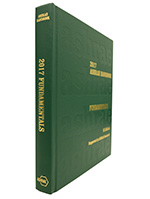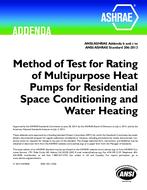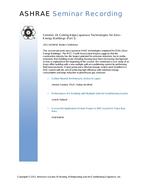Ultraviolet Germicidal Irradiation (UVGI) of cooling coils is done to control biofouling that can increase their flow resistance and decrease their heattransfer coefficient. UVGI is also applied in air-handling units to improve indoor air quality (IAQ) by deactivating airborne microorganisms. A typicalcoil cleaning application delivers a smaller UV dose than an air treatment system, but should provide some collateral air treatment benefit. To date, thiseffect has not been studied. In this investigation, the benefit of air treatment provided by a cooling coil irradiation system is estimated via simulationsemploying a subset of the DOE Commercial Reference Buildings library. Benefits were quantified in terms of changes in appropriate measures for eachbuilding type: work-loss days (WLD) for office buildings, disability adjusted life years (DALY) for schools, and hospital acquired infections (HAI) forhealthcare facilities. UVGI sized for coil cleaning results in a 0% to 7% average reduction in the measure of interest for each building type. Thisreduction is negatively related to the average outdoor air fraction in each building type, i.e., incremental benefit of UVGI decreases with increasing outdoorair fraction. Combining WLDs with US Gross National Income to monetize annual savings for office buildings yields $0.22/m2 – $3.11/m2 forSmall, $0.12/m2 – $0.91/m2 for Medium, and $0.01/m2 – $0.23/m2 for Large types. Combining DALYs with US Gross National Income tomonetize savings for Primary and Secondary Schools results in a wide range: $0.00/m2 to $0.62/m2 due to the large range of values one mightreasonably assign to a DALY. In hospitals, reduction in airborne HAIs resulted in estimated savings of $0.05/m2 to $0.40/m2.
Citation: ASHRAE and AIVC IAQ 2016 Conf
Product Details
- Published:
- 2016
- Number of Pages:
- 8
- Units of Measure:
- Dual
- File Size:
- 1 file , 560 KB
- Product Code(s):
- D-2016IAQ-21


